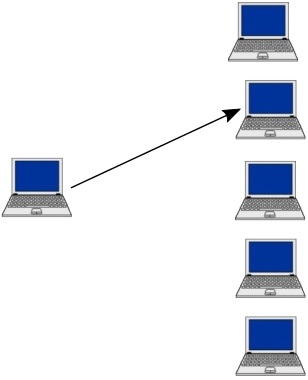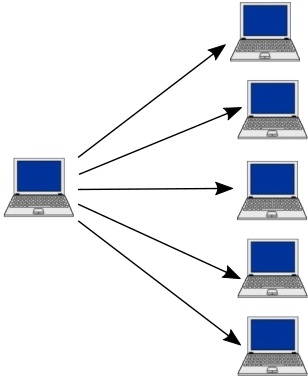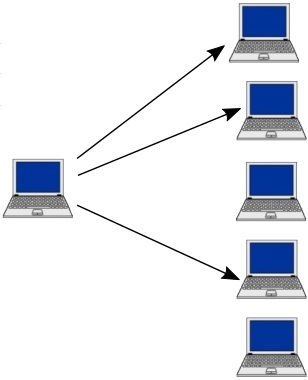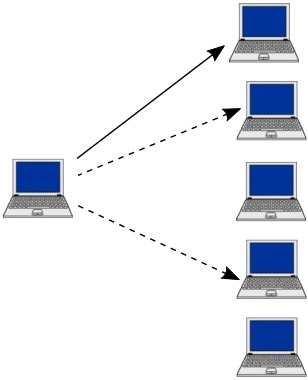First a review of the other addressing modes.

Unicast (one-to-one) - Data is sent from one unique host to another unique host. There is only one sender, and one receiver. This is the most common case.

Broadcast (one-to-all) - Data is sent from one unique host and a copy of that data will be forwarded to all other hosts in a given scope. There is only one sender and the data is sent only once. But the data is delivered to all devices in the broadcast domain (i.e. physical network, vlan etc.).

Multicast (one-to-many) - Data is sent from one unique host to a specific group of devices on the network. Devices interested in a particular Multicast traffic must join that Multicast group to receive the traffic. An example of multicast traffic is a single host sending a video stream. That host sends only one copy of each packet whether 1 or 100 hosts join the group and whether those hosts are on the same local network or spread across a larger routed network.

Anycast From a network perspective the connection looks like a unicast - one unique host sending to another. The difference is that the target address actually exists in multiple places. When the given host sends a packet to this address it will follow the shortest route as defined by the routing protocols. If that fails then that route is removed and packets will be sent to the next shortest route. Anycasting is commonly used to to solve the load balance problem.
More Networking Basics:
• Network Patch Panel Basics
• What Routers Do
• Definition: Cloud Computing
• Bluetooth in Brief
• Computer Number Systems Made Simple
• The Function of the Three Planes of Junos Network OS
• A Complete Explanation of Cloud Computing
• What You Need to Know About a Career as a Network Engineer
• NRZ, NRZI, Manchester Encoding, What Does it Mean?
• Virtualization For Dummies Cheat Sheet

